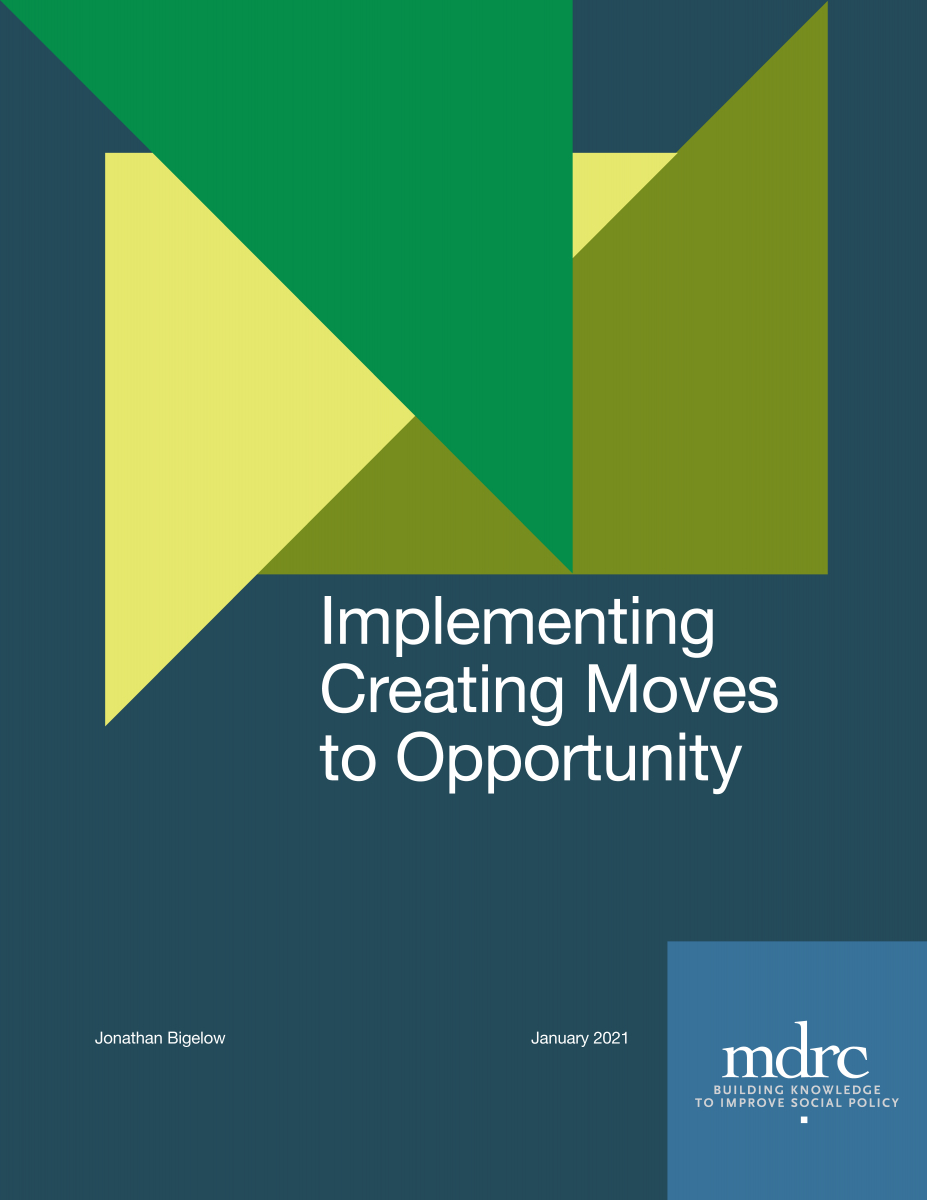Implementing Creating Moves to Opportunity


The Creating Moves to Opportunity (CMTO) Demonstration evaluated new services designed to increase the number of families with young children leasing in areas with historically high upward income mobility, or “high-opportunity areas,” in the city of Seattle and King County, Washington. In two phases, King County Housing Authority (KCHA), Seattle Housing Authority (SHA), and a service provider called InterIm CDA offered three CMTO programs to families when they applied to the Housing Choice Voucher program. This report presents staff insights on CMTO.
In Phase 1, families randomly assigned to receive CMTO services were offered a comprehensive package of high-opportunity-area education, rental application coaching, housing search planning and assistance, financial assistance to cover rental application and lease-up costs, and landlord engagement to promote CMTO and expedite the public housing agencies’ (PHAs’) administrative processes. “Navigators” at InterIm CDA delivered the services, coaching families to obtain their desired housing. Phase 2 tested this comprehensive program plus two less intensive, lower-cost programs. Select findings include:
- Navigators believed that many families found CMTO attractive because it improved their chances of leasing in the voucher program and affording costs like security deposits; they also overwhelmingly welcomed the focus on high-opportunity neighborhoods.
- Following high participation in initial CMTO service interactions, some families engaged lightly with the navigators during their housing search either because they were searching independently in high-opportunity areas or because they were not actively searching or were searching outside of high-opportunity areas. Other families engaged intensively with the navigators as partners during the search process.
- The navigators initially struggled to serve a minority of families who appeared to expect them to take the lead in their housing search. Adjustments were made during Phase 1 to reinforce CMTO’s emphasis on coaching families to lead housing searches with navigator support.
- Navigators observed that families seemed to have uniform, favorable perceptions of SHA’s relatively clustered high-opportunity areas. KCHA’s high-opportunity areas were more dispersed and varied, and many KCHA participants initially searched in more familiar and less affluent high-opportunity areas. These families often faced challenges finding affordable rental housing through the voucher program and so expanded their searches to other areas.
- Navigators aimed at influencing rental application screening outcomes for families in engaging landlords. Many families had barriers to approval, but although rental application denials were common, family and staff appeals to landlords could reverse them.
- The navigators asserted that the full array of Phase 1 services contributed to the program’s effectiveness and emphasized the importance of coaching families to communicate with landlords. Streamlined Phase 2 programs led to less vigorous family engagement and fewer opportunities to support families encountering setbacks, but motivated families who were comfortable dealing directly with landlords could overcome rental application barriers.
- Navigators and PHA staff members underscored the importance of empathy, flexibility, and culturally competent approaches to delivering family-centered, landlord-responsive services.






